| Home | Nature Weekly Index |
1 February 2015 | Walk at the Park |
.jpg) January was gone and I had not really got much time to venture out for the whole of last month, except for one
short trip with the foraging gang, a 45-minute pass-by at the Healing Garden section of
the Botanical Gardens and two walks in the nearby parks. Due to the occasional heavy rain couple with strong wind in the last few
months, the small park near my place had undergone significant damage. Many of the tall
Rubber Tree (Hevea brasiliensis) had fallen. The once greenish canopy of the
small left-over dense rubber tree plantation was now rather bare. It will take quite a while for the area to regain its good old
greenish glory.
January was gone and I had not really got much time to venture out for the whole of last month, except for one
short trip with the foraging gang, a 45-minute pass-by at the Healing Garden section of
the Botanical Gardens and two walks in the nearby parks. Due to the occasional heavy rain couple with strong wind in the last few
months, the small park near my place had undergone significant damage. Many of the tall
Rubber Tree (Hevea brasiliensis) had fallen. The once greenish canopy of the
small left-over dense rubber tree plantation was now rather bare. It will take quite a while for the area to regain its good old
greenish glory.
With not much to explore in this park, I decided to go to another park further down the road --- Admiralty Park, last weekend. This park had suffered quite a bit from the urban development at its surrounding parameters as well as internally, with more tracks widened and cemented recently. Upgrading of the facilities may be great for people access but may not be so receptive to the nature's native inhabitants there. More human traffic passing through the tracks means increase intrusion to the privacy of the natives. I always question the inevitability argument of the situation.
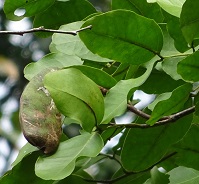

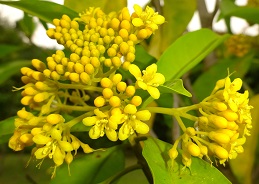 Surprisingly, I still managed to add 3 new plants from this often-visited park. One was planted by NPark
(Pteleocarpa lamponga), as part of the effort to restore the wild greenery
there. It is supposed to be a native plant but was no longer found in the wild. Another was a long-term resident
(Intsia bijuga) of this once-upon-a-time wetland forest. It must have witness the
drastic changes in its homeland over time. The last one was an opportunist squatter that sprout due to a recent clearance of thick
vegetation alongside a small drain (Cyperus imbricatus).
Surprisingly, I still managed to add 3 new plants from this often-visited park. One was planted by NPark
(Pteleocarpa lamponga), as part of the effort to restore the wild greenery
there. It is supposed to be a native plant but was no longer found in the wild. Another was a long-term resident
(Intsia bijuga) of this once-upon-a-time wetland forest. It must have witness the
drastic changes in its homeland over time. The last one was an opportunist squatter that sprout due to a recent clearance of thick
vegetation alongside a small drain (Cyperus imbricatus).
The walk was relatively short as some track-cementing work was going on in one part of the park. When there was too much noises or movement, the chance of finding interesting minibeasts is very low. Nevertheless, I still managed to take some of their pictures. From left to right: (1) A Tussock Moth caterpillar moving close to a nest of spiderlings; (2) A male Ant-Mimicking Jumping Spider (Myrmarachne cornuta) stationed by the side of its nest; (3) A young Ghost Spider (Neoscona punctigera); (4) A small arboreal snail (Helicarion perfragilis).

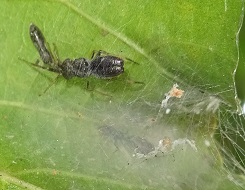
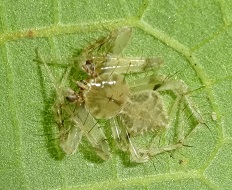
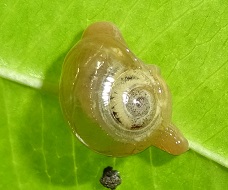
Hopefully, the active planting of native trees around the open areas will be able to restore the wetland forest in the not too far future.